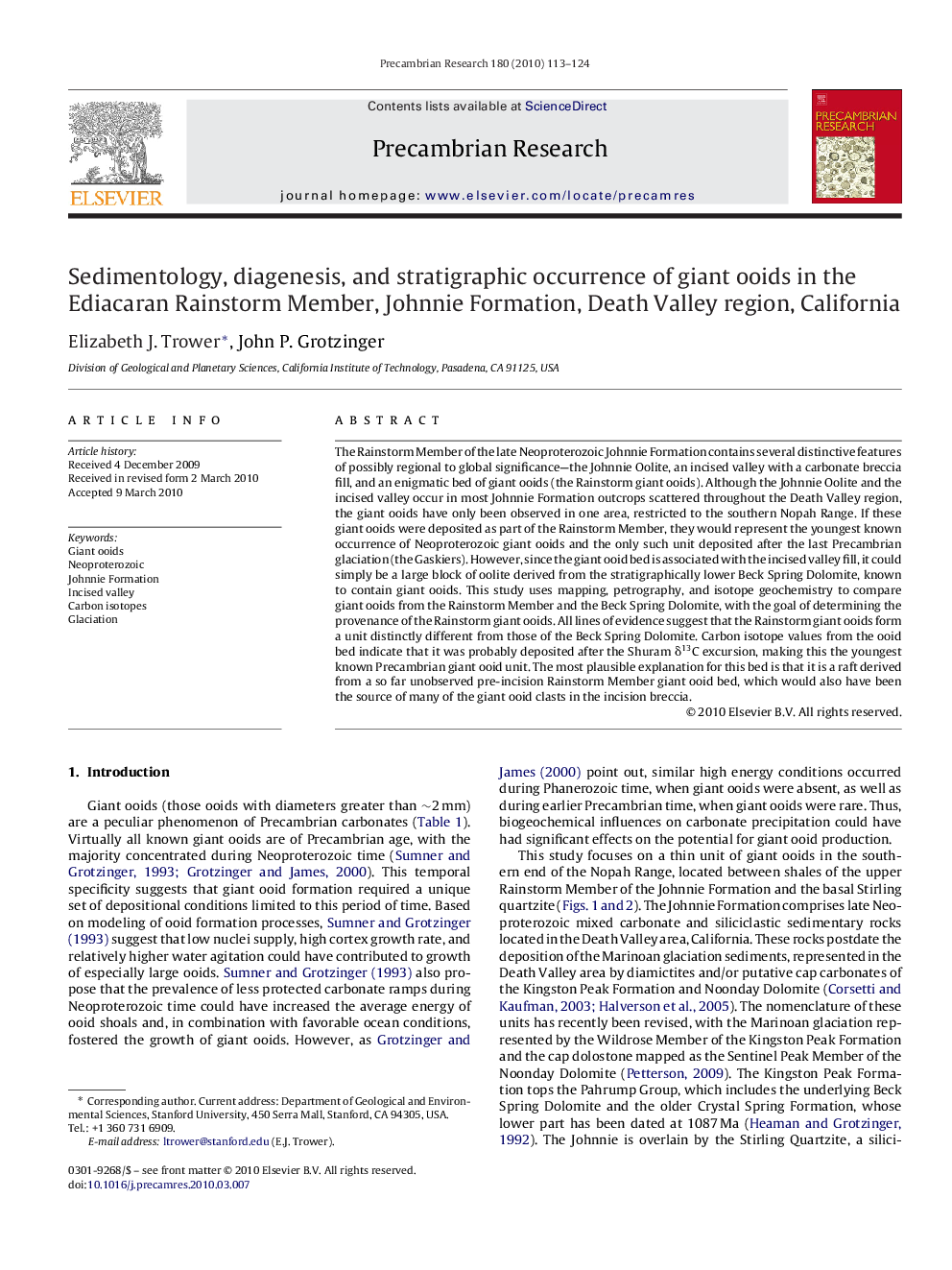| Article ID | Journal | Published Year | Pages | File Type |
|---|---|---|---|---|
| 4723857 | Precambrian Research | 2010 | 12 Pages |
The Rainstorm Member of the late Neoproterozoic Johnnie Formation contains several distinctive features of possibly regional to global significance—the Johnnie Oolite, an incised valley with a carbonate breccia fill, and an enigmatic bed of giant ooids (the Rainstorm giant ooids). Although the Johnnie Oolite and the incised valley occur in most Johnnie Formation outcrops scattered throughout the Death Valley region, the giant ooids have only been observed in one area, restricted to the southern Nopah Range. If these giant ooids were deposited as part of the Rainstorm Member, they would represent the youngest known occurrence of Neoproterozoic giant ooids and the only such unit deposited after the last Precambrian glaciation (the Gaskiers). However, since the giant ooid bed is associated with the incised valley fill, it could simply be a large block of oolite derived from the stratigraphically lower Beck Spring Dolomite, known to contain giant ooids. This study uses mapping, petrography, and isotope geochemistry to compare giant ooids from the Rainstorm Member and the Beck Spring Dolomite, with the goal of determining the provenance of the Rainstorm giant ooids. All lines of evidence suggest that the Rainstorm giant ooids form a unit distinctly different from those of the Beck Spring Dolomite. Carbon isotope values from the ooid bed indicate that it was probably deposited after the Shuram δ13C excursion, making this the youngest known Precambrian giant ooid unit. The most plausible explanation for this bed is that it is a raft derived from a so far unobserved pre-incision Rainstorm Member giant ooid bed, which would also have been the source of many of the giant ooid clasts in the incision breccia.
